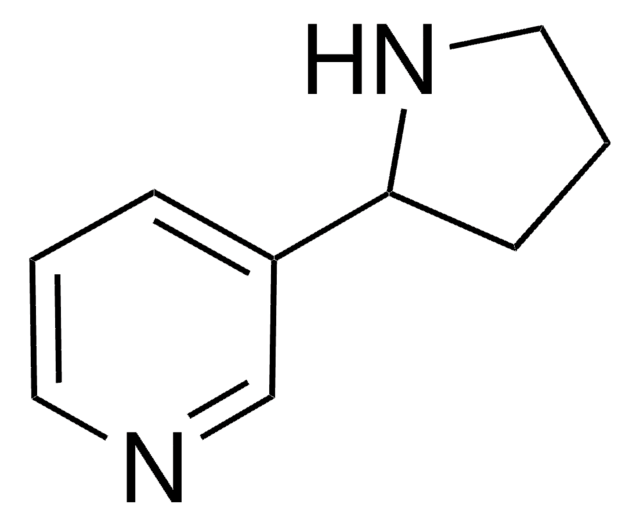Wichtige Dokumente
B85927
tert-Butanol
TEBOL® 99, ≥99.3%
Synonym(e):
2-Methyl-2-propanol, tert-Butylalkohol, Trimethylcarbinol
About This Item
Empfohlene Produkte
Dampfdichte
2.5 (vs air)
Qualitätsniveau
Dampfdruck
31 mmHg ( 20 °C)
44 mmHg ( 26 °C)
Assay
≥99.3%
Form
solid or liquid
Selbstzündungstemp.
896 °F
Expl.-Gr.
8 %
Hersteller/Markenname
TEBOL® 99
Verunreinigungen
≤0.15% (water)
Brechungsindex
n20/D 1.387 (lit.)
pH-Wert
7 (20 °C)
bp
83 °C (lit.)
mp (Schmelzpunkt)
23-26 °C (lit.)
Dichte
0.775 g/mL at 25 °C (lit.)
SMILES String
CC(C)(C)O
InChI
1S/C4H10O/c1-4(2,3)5/h5H,1-3H3
InChIKey
DKGAVHZHDRPRBM-UHFFFAOYSA-N
Suchen Sie nach ähnlichen Produkten? Aufrufen Leitfaden zum Produktvergleich
Allgemeine Beschreibung
Anwendung
- A cosolvent with water (tert-Butanol/Water binary system) in the production of poly-ε-caprolactone (PCL) nanoparticles.
- A solvent in the synthesis of ZnO nanoparticles (Zinc oxide nanoparticles) from zinc acetylacetonate hydrate.
Leistungsmerkmale und Vorteile
Rechtliche Hinweise
Signalwort
Danger
H-Sätze
Gefahreneinstufungen
Acute Tox. 4 Inhalation - Eye Irrit. 2 - Flam. Liq. 2 - STOT SE 3
Zielorgane
Central nervous system, Respiratory system
Lagerklassenschlüssel
3 - Flammable liquids
WGK
WGK 1
Flammpunkt (°F)
59.0 °F - closed cup
Flammpunkt (°C)
15 °C - closed cup
Hier finden Sie alle aktuellen Versionen:
Besitzen Sie dieses Produkt bereits?
In der Dokumentenbibliothek finden Sie die Dokumentation zu den Produkten, die Sie kürzlich erworben haben.
Kunden haben sich ebenfalls angesehen
Unser Team von Wissenschaftlern verfügt über Erfahrung in allen Forschungsbereichen einschließlich Life Science, Materialwissenschaften, chemischer Synthese, Chromatographie, Analytik und vielen mehr..
Setzen Sie sich mit dem technischen Dienst in Verbindung.





